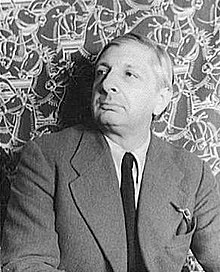Artists
Related: About this forumGiorgio de Chirico, Godfather of Surrealism: Mysterious Cityscapes, Lockdowns of Today
'Giorgio de Chirico: How the Godfather of Surrealism Crafted His Mysterious Cityscapes,' Art News, *May 15, 2020.

- Two works by Giorgio De Chirico on view in "Deja-vu? The Art of Repetition From Dürer to YouTube," 2012, at the Staatliche Kunsthalle Karlsruhe, Germany.
What can an empty town square tell us about the human condition? Giorgio de Chirico considered that question with his mysterious works produced between 1911 and 1917. They were unlike anything else being made in Europe at the time, resembling nothing like the haughty abstractions then being produced by Cubists in Paris or the colorful experiments with motion being made by the Futurists in Italy. De Chirico’s work from this era was termed “Metaphysical Painting” by the French poet and critic Guillaume Apollinaire, and it would become fundamental to the development of Surrealism for the way his enigmatic scenes seemed less concerned with presenting any kind of reality than they were with offering up dreamlike scenarios that were at once disorienting and confounding, sinister and sly, heartbreaking and solitary.

- De Chirico portrait by Carl Van Vechten, 1936.
Carolyn Christov-Bakargiev, director of the Castello di Rivoli Museo d’Arte Contemporanea in Turin, Italy, which manages the Cerruti Collection, which houses 10 important works by de Chirico, told ARTnews, “De Chirico’s radicalism was to make the first painting that was not a figurative representation of reality but a representation of how the mind sees reality—he created a kind of meta-figurative painting, showing how the mind looks at the world from a distance.” Below, a guide to the artist Giorgio de Chirico. How He Arrived at His Signature Style: It took a while before de Chirico began painting his signature images of empty plazas.
He was born in Greece in 1888 to Italian parents and he and his family moved around at various points in his life. He studied painting in Athens and Munich and was living in Florence by 1910.

- The Red Tower, 1913.

- Il saluto degli Argonauti partenti (Greetings of the Departing Argonauts), 1920.
While sitting on a bench in the Piazza Santa Croce, facing a Gothic church and a statue of Dante, he had a breakthrough. Upon being there, the artist later wrote, “I had the strange impression that I was looking at these things for the first time, and the composition of the painting revealed itself to my mind’s eye. Now every time I look at this picture, I see that moment once again. Nevertheless, the moment is an enigma for me, in that it is inexplicable. I like also to call the work derived from it an enigma.” In a catalogue essay for a de Chirico retrospective at the Museum of Modern Art in 1982, critic Maurizio Fagiolo dell’Arco interpreted the artist’s awakening as a realization that his psychological state was at odds with his surroundings. “Herein lies the whole meaning of Metaphysical art: to see something and go beyond it,” dell’Arco wrote.
Around this time de Chirico began reading the work of German philosopher Friedrich Nietzsche, whose writings would prove hugely influential, and then in 1911 he moved to Paris, where his brother Andrea (who would soon change his name to Alberto Savinio) was already living..De Chirico’s Paris period, which lasted from 1911 until 1915, has been considered the most fruitful part of his career. He often painted town squares in a melancholic shade of yellow; his plazas are typically empty, save for small figures with long shadows or infinite rows of arcades punctuated by statues or faceless mannequins, which might be a tribute to the modernist sculptor Constantin Brâncuși. A large pink rubber glove is also a recurring motif in his art, as are towers, chimneys, architectural arcades, clocks, fragments of marble sculptures, paintings within the painting, and long shadows that don’t seem to match the time of day.
One Italian critic of the early 20th century, Ardengo Soffici, wrote in 1914, “The painting of de Chirico is not painting, in the sense that we use that word today. It could be defined as a writing down of dreams. … [H]e truly succeeds in expressing that sensation of vastness, of solitude, of immobility...
More, https://www.artnews.com/feature/giorgio-de-chirico-why-is-he-famous-1202687371/
Giorgio de Chirico, https://en.wikipedia.org/wiki/Giorgio_de_Chirico

- The Song of Love, 1914.